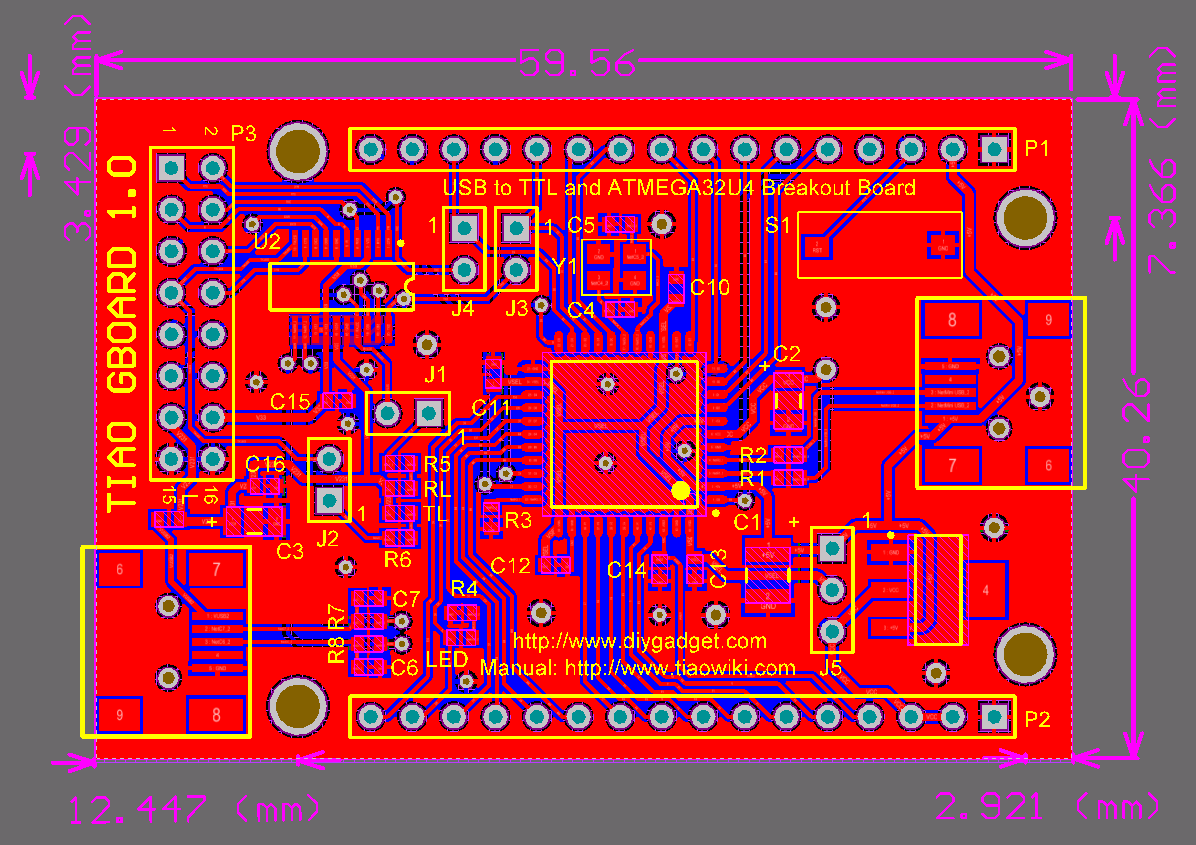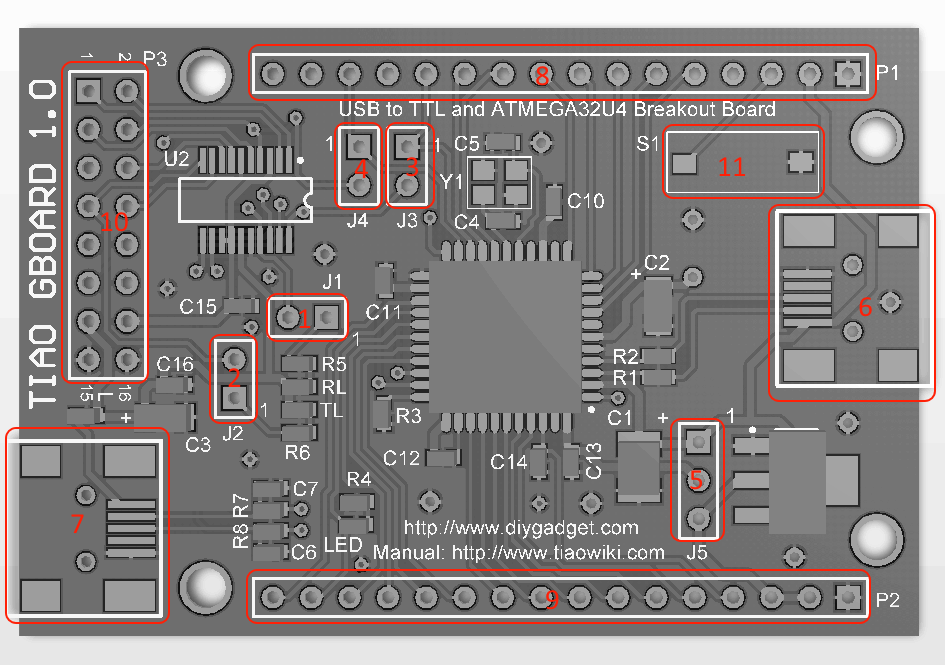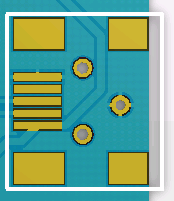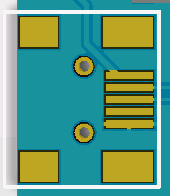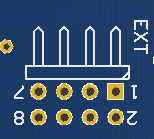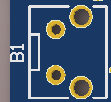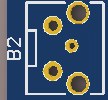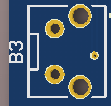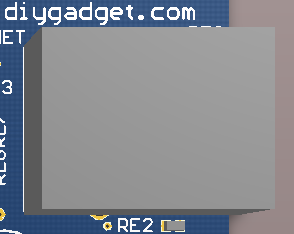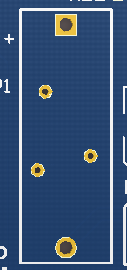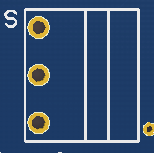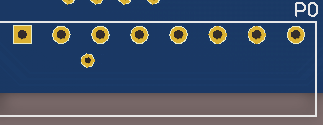TIAO GBoard/GIMX Board Hardware Layout

10 PCS, 10cm x 10cm, 2 layers prototype for $38.80 shipped!
Contents
- 1 TIAO GBoard / GIMX Adapter
- 1.1 TIAO GBoard/GIMX Adapter Hardware Dimensions
- 1.2 TIAO GBoard/GIMX Adapter Connector Layouts
- 1.2.1 J1
- 1.2.2 J2
- 1.2.3 J3
- 1.2.4 J4
- 1.2.5 J5
- 1.2.6 ATMEGA32U4 USB Connector
- 1.2.7 FT232X USB Connector
- 1.2.8 RF Header
- 1.2.9 ISP header
- 1.2.10 Extension board header
- 1.2.11 MicroSD socket
- 1.2.12 AVR Power selector
- 1.2.13 Relay header
- 1.2.14 Soft button 1
- 1.2.15 Soft button 2
- 1.2.16 Soft button 3
- 1.2.17 LCD display header
- 1.2.18 Ethernet receptacle
- 1.2.19 Fuse holder
- 1.2.20 Power switch
- 1.2.21 Power status LED
- 1.2.22 24V AC and rain sensor header
- 1.2.23 Station 1-16 header
TIAO GBoard / GIMX Adapter
For system connection diagram as GIMX adapter, please refer to TIAO GIMX System Connection Diagram.
The TIAO GBoard / GIMX adapter is a combined all in one board for serial and AVR development. It also provides jumper connections for easy and quick GIMX connectoion (to be used as a GIMX Game Input MultipleXer or Game Input MatriX adapter. For more information on GIMX, please check it out here.
The TIAO GBoard/GIMX Adapter features:
- All in one board contains USB to COM adapter and ATMEVA32U4 for AVR development.
- Bootloader is installed on the ATMEGA32U4, so you don't need a programmer to load the firmware.
- Quick connection jumpers to convert the GBoard to a GIMX adapter
- RX/TX LED, enable LEDs or use the pins for IO ports
TIAO GBoard/GIMX Adapter Hardware Dimensions
The board dimension of TSS is 59.56 x 40.26mm. It also has 4 mounting holes, the radius of the mounting hole is 2.5mm:
TIAO GBoard/GIMX Adapter Connector Layouts
The following picture shows the connector layout of the TIAO GBoard/GIMX Adapter.
- USB to COM RX LED
- USB to COM TX LED
- GIMX TXD Enable
- GIMX RXD Enable
- ATMEGA32U4 Power Select
- ATMEGA32U4 USB Connector
- FT231X USB Connector
- ATMEGA32U4 IO Pin Header 1
- ATMEGA32U4 IO Pin Header 2
- FT231X IO Pin Header
J1
- Jumper on: Enable RX Led for USB to COM/Serial.
- Jumper off: Enable CBUS1 output for FT231X.
J2
- Jumper on: Enable TX Led for USB to COM/Serial.
- Jumper off: Enable CBUS2 output for FT231X.
J3
- Jumper on: Enable board to be a DIY GIMX adapter (J4 has to be on as well)
- Jumper off: Enable board to be a AVR and USB to Serial development board. (J4 has to be off as well)
J4
- Jumper on: Enable board to be a DIY GIMX adapter (J3 has to be on as well)
- Jumper off: Enable board to be a AVR and USB to Serial development board. (J3 has to be off as well)
J5
- Jumper on 1-2: Enable 3.3V IO on ATMEGA32U4.
- Jumper on 2-3: Enable 5.0V IO on ATMEGA32U4.
ATMEGA32U4 USB Connector
- The USB connector for ATMEGA32U4.
FT232X USB Connector
- The USB connector for FT231X.
RF Header
| Pin # | Description |
|---|---|
| 1 | A3 - Data |
| 2 | VIN - 5V |
| 3 | GND |
Radio Frequency (RF) transmitter header. Works with standard 434MHz or 315MHz RF transmitter.
ISP header
| Pin # | Description |
|---|---|
| 1 | MISO |
| 2 | VIN - 5V |
| 3 | SCK |
| 4 | MOSI |
| 5 | RESET |
| 6 | GND |
Extension board header
| Pin # | Description |
|---|---|
| 1 | Vcc - 3.3V |
| 2 | QH* |
| 3 | A4/ADC4 |
| 4 | Clock/TOSC1 |
| 5 | GND |
| 6 | Latch/AIN1 |
| 7 | GND |
| 8 | OE/T1 |
Connect any extension boards to this header.
MicroSD socket
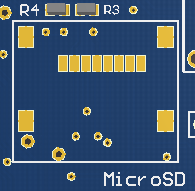 Optional MicroSD socket for logging.
Optional MicroSD socket for logging.
AVR Power selector
 Select power source for AVR Microcontroller. Default is 3.3v.
3.3v Power: jumper over pin 1 and 2.
5V power: jumper over pin 2 and 3.
Select power source for AVR Microcontroller. Default is 3.3v.
3.3v Power: jumper over pin 1 and 2.
5V power: jumper over pin 2 and 3.
Relay header
| Pin # | Description |
|---|---|
| 1 | NC - Normally closed pin |
| 2 | CO - Change over pin |
| 3 | NO - Normally open pin |
The relay is rated as 250V/3A/AC or 30V/3A/DC, however for safety concerns, please DO NOT connect anything higher than 28V/2A.
Soft button 1
The function of B1/B2/B3 depends on the firmware version. For version 2.1.4, these are the functions:
| Press then release | Press and hold |
|---|---|
| Display current IP address | Stop all stations immediately. |
Soft button 2
The function of B1/B2/B3 depends on the firmware version. For version 2.1.4, these are the functions:
| Press then release | Press and hold |
|---|---|
| Display MAC address | Restart controller |
Soft button 3
The function of B1/B2/B3 depends on the firmware version. For version 2.1.4, these are the functions:
| Press then release | Press and hold |
|---|---|
| Toggle between the main controller (MC) and each expansion board (E1, E2, etc). | Manually start an existing program or a test program. |
LCD display header
Insert the LCD module directly on the LCD header. Make sure pins are aligned, otherwise the LCD/controller will be damaged.
Ethernet receptacle
Plug Ethernet cable here for network access. If wired network is not available, there are many other options, such as using a wireless router in client mode (for example: 150Mbps Wireless N Nano Router (Micro USB Power) TL-WR702N or 150Mbps Wireless N Mini Pocket Router (direct power) TL-WR700N) or powerline network adapter kit (Linxe LSP06 200Mbps etherent powerline network adapter Kit (2)).
Fuse holder
The on board fuse hold. The fuse is rated at 2A.
Power switch
The main power switch. Slide up to turn on the controller, slide down to turn off the controller.
Power status LED
Power status LEDs.
| Pin | Description |
|---|---|
| PWR | ON: VIN (5V) is working |
| V33 | ON: Vcc (3.3V) is working |
24V AC and rain sensor header
This header allows you to connect the power (24V, 2A AC) to the TSS. This is the only power source needed for the controller. For power, connect one of the 24V AC 2A transformer's terminal to pin 8 (24V AC In) and the other terminal to pin 7 (GND) For rain sensor, connect one of the rain sensor's terminal to pin 5 (Rain sensor terminal) and the other terminal to pin 6. The rain sensor is optional.
| Pin | Description |
|---|---|
| 1, 2, 3, 4 | Common wire, connect to sprinkler valve's common terminals. |
| 5 | Rain sensor terminal |
| 6, 7 | GND |
| 8 | 24V AC In |
Station 1-16 header
TSS can control 16 stations (including master station if you have one) without expansion board. This header has 16 connectors, so you can connect up to 16 valves.
- Example 1: My irrigation system has 10 stations, I do not have a master station.
- Connect RED wires of the valves to 'Common wire' connectors (see #24V AC and rain sensor header), then connect BLACK wires of the valves to connector 1 to 10 respectively.
- Example 2: My irrigation system has 15 stations, I have a master station.
- Connect RED wires of the valves to 'Common wire' connectors (see #24V AC and rain sensor header), then connect BLACK wire of the the master valve to connector 16, and other BLACK wires of regular valves to connector 1 to 15 respectively.

10 PCS, 10cm x 10cm, 2 layers prototype for $38.80 shipped!
